1. The “Mission Accomplished” Banner (2003)
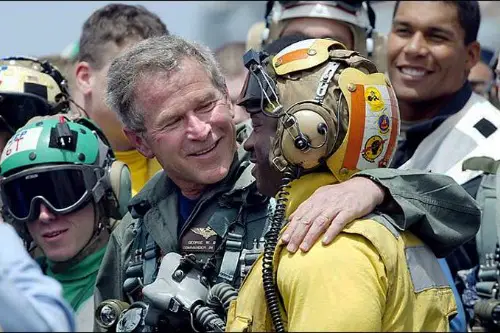
When President George W. Bush stood on the USS Abraham Lincoln under a massive “Mission Accomplished” banner, it looked like a triumphant moment in the Iraq War. The problem? The war was far from over, and the banner’s message was wildly premature, Davia Temin from Forbes explains. While the White House later claimed the sign referred to the ship’s mission, not the war itself, the optics told a different story. What was meant to be a victory lap quickly turned into a symbol of misplaced confidence.
In reality, the Iraq War dragged on for years, with thousands more American and Iraqi lives lost. The stunt was meant to boost public morale and reinforce Bush’s image as a strong leader. Instead, it became a textbook example of how PR spin can backfire when the facts don’t align with the message. The banner was supposed to signal success, but history remembers it as a glaring misstep.
2. The Iwo Jima Flag Raising (1945)
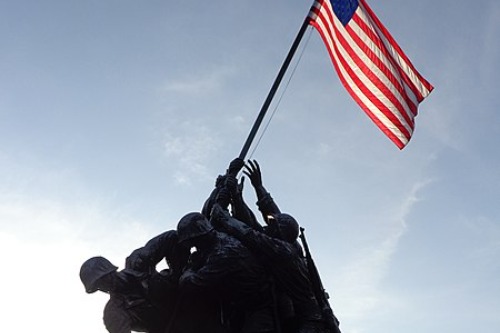
The iconic image of U.S. Marines raising the American flag on Iwo Jima is one of the most famous photographs in history. But what many don’t realize is that the image we all know wasn’t the first flag-raising—it was a staged re-creation. Earlier that day, a smaller flag had been planted, but military brass wanted a more dramatic scene with a larger flag. The second flag-raising, captured by photographer Joe Rosenthal, gave the U.S. a powerful symbol of victory.
While the battle was still raging, the image was quickly used to sell war bonds and rally national support, Sarah Holzmann from the Smithsonian Magazine explains. The six Marines in the photo became instant heroes, though some of them never made it home. The photograph wasn’t fake, but it was carefully orchestrated to maximize its emotional impact. It became an enduring piece of American mythology—just with a little PR magic behind it.
3. Betsy Ross and the First American Flag
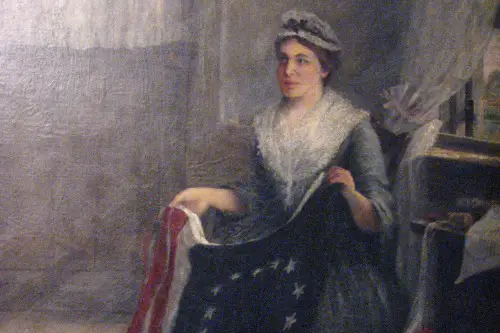
Every American schoolkid learns the story of Betsy Ross sewing the first American flag at George Washington’s request. But there’s no solid historical evidence that this ever happened, according to Tyler Piccotti from Biography. The story only surfaced nearly a century later, when Ross’s grandson told it to a historical society. It conveniently helped create a patriotic, homegrown origin story for the nation’s most important symbol.
The tale of Ross as the mother of the American flag fit neatly into the 19th-century push for national unity. It also helped highlight the contributions of women during the Revolution, even if it wasn’t entirely accurate. While Ross was indeed a flag maker, there’s no proof she designed or sewed the first flag. The real origins of the Stars and Stripes are far murkier than the legend suggests.
4. The “We Can Do It!” Poster (1943)
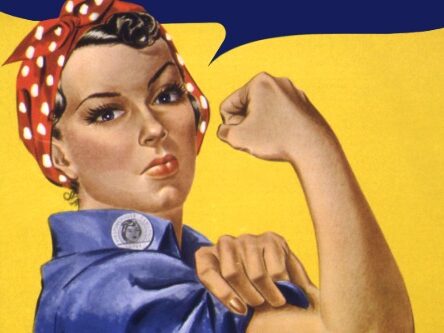
The famous “We Can Do It!” poster featuring a woman flexing her arm is often thought to be Rosie the Riveter, a symbol of female empowerment during World War II. In reality, the poster was a short-lived workplace morale booster for Westinghouse Electric, not a nationwide call to arms. It wasn’t widely seen during the war and only became famous decades later. The real Rosie the Riveter campaign was part of a broader government effort to recruit women into the workforce, according to Lisa Ferdinando from DOD News (Department of Defense).
The poster’s revival in the 1980s turned it into a feminist icon, but its original intent was more about company loyalty than gender equality. While millions of women did step into factory jobs, they were expected to leave once the war ended. The government’s messaging was never about long-term workplace equality—it was about filling a temporary labor gap. The modern meaning of “We Can Do It!” is powerful, but its origins are more corporate than revolutionary.
5. The Moon Landing Flag Wave (1969)
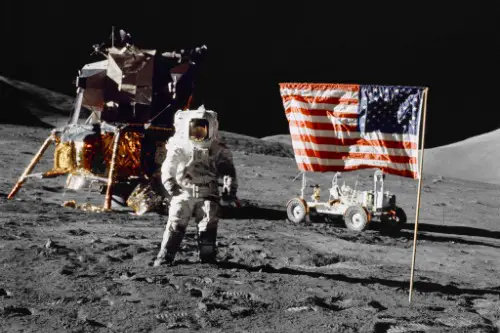
One of the most enduring images of the Apollo 11 moon landing is the American flag appearing to wave in the lunar breeze. But there’s a problem—there’s no breeze on the Moon. The movement of the flag was actually caused by the astronauts twisting the pole into the ground, making it ripple. NASA even used a horizontal rod to keep the flag extended, since gravity wouldn’t let it hang naturally.
While the flag was a genuine part of the mission, its waving effect accidentally fueled conspiracy theories about the landing being staged. The reality is that planting the flag was as much about PR as it was about scientific achievement. The U.S. wanted to make it clear that America—not the Soviet Union—had won the Space Race. A still flag might not have had the same dramatic effect, so a little extra movement went a long way.
6. Reagan’s “Tear Down This Wall” Speech (1987)

Ronald Reagan’s dramatic demand for the Berlin Wall to be torn down is often credited with helping end the Cold War. But at the time, the speech was more of a bold PR move than a strategic policy shift. Reagan’s advisors actually tried to remove the line, fearing it was too provocative. The Berlin Wall didn’t fall until two years later, due to internal Soviet and East German pressures—not just a speech.
The moment played perfectly for American audiences, reinforcing Reagan’s image as a leader who took a hard stance against communism, Lucy Madison from CBS News shares. While it was a powerful statement, it wasn’t the decisive factor in the Wall’s fall. The speech was designed for the history books, and it worked. Today, it’s remembered as a turning point, even though the reality was far more complex.
7. The “Freedom Fries” Campaign (2003)

In the early 2000s, some American lawmakers were so upset with France for not supporting the Iraq War that they rebranded French fries as “Freedom Fries.” The stunt, led by a North Carolina congressman, was meant to be a patriotic show of defiance. Restaurants, cafeterias, and even the White House got on board, making the switch in menus. But the entire move was a symbolic gesture with zero real-world impact.
Despite the media frenzy, the name change never stuck, and most people quickly went back to calling them French fries. The effort was meant to paint dissenting countries as unpatriotic, but it mostly became a punchline. Even the congressman behind the change later admitted it was silly. It’s a prime example of how patriotism can sometimes be used as political theater.
8. The Statue of Liberty’s “Welcome”
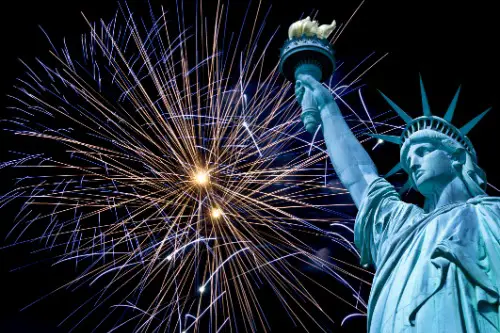
The Statue of Liberty is often seen as a symbol of America welcoming immigrants, thanks to the poem “The New Colossus” engraved at its base. But when the statue was dedicated in 1886, immigration wasn’t even part of the message. It was originally meant to celebrate the U.S.-France friendship and the ideals of liberty—not immigration. The famous poem wasn’t added until 1903, long after the statue’s unveiling.
While the statue has come to represent a beacon of hope for immigrants, that was a later reinterpretation. At the time, the U.S. was heavily restricting immigration from certain regions. The PR spin of Lady Liberty as a symbol of open arms came later, when the country needed a more positive narrative. It’s a case of history being reshaped to fit an ideal.
9. The Boston Tea Party as a Purely Patriotic Act

The Boston Tea Party is often portrayed as a noble act of defiance against British tyranny, but there was also a strong economic motive behind it. Many of the colonists involved were smugglers who stood to lose money from Britain’s decision to lower tea prices. The British East India Company was allowed to sell its tea directly to the colonies at a cheaper rate, undercutting local merchants. So, while the protest was about taxation without representation, it was also about business interests.
The dumping of tea into Boston Harbor made for a dramatic, patriotic story, but it wasn’t just about freedom—it was about profits. The Sons of Liberty used the event to stir up anti-British sentiment, framing it as a fight for American rights. In reality, many colonists still drank smuggled Dutch tea, showing their rebellion was selective. It was a brilliant PR move that helped spark the Revolution, but the financial stakes shouldn’t be ignored.
10. The Pledge of Allegiance’s “One Nation Under God”
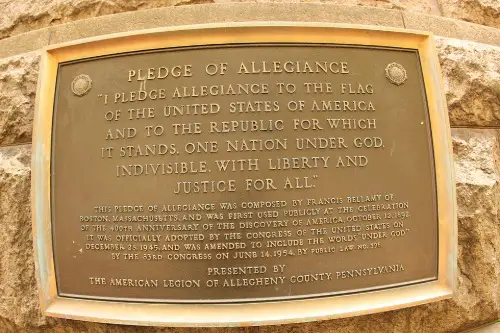
The Pledge of Allegiance has been recited by American schoolchildren for decades, but the phrase “under God” wasn’t always part of it. The original pledge, written in 1892, made no mention of religion at all. It wasn’t until 1954, during the height of the Cold War, that “under God” was added. The goal was to distinguish the U.S. from the “godless” Soviet Union and reinforce patriotic loyalty.
This change wasn’t just about faith—it was a political statement wrapped in religious language. The move was heavily pushed by religious groups and politicians who wanted to make anti-communism a moral crusade. Today, many assume “under God” has always been part of the pledge, but it was actually a mid-20th-century PR decision. It’s a reminder of how patriotism and political messaging often go hand in hand.
11. The Gulf of Tonkin Incident (1964)
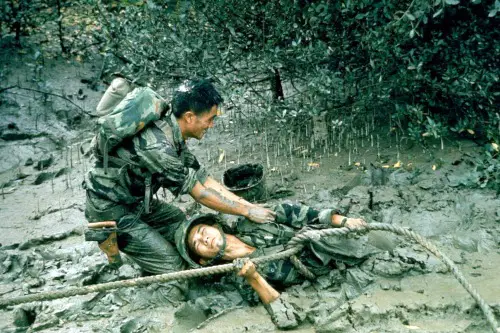
The Gulf of Tonkin Incident is often cited as the event that led the U.S. deeper into the Vietnam War. The official story claimed that North Vietnamese boats attacked U.S. ships unprovoked, but later evidence revealed that at least one of the attacks never happened. The Johnson administration used the incident to justify military escalation, rallying public and congressional support. It was a textbook example of using a dramatic event to push a political agenda.
At the time, the American people were led to believe the U.S. was merely defending itself. But declassified documents later showed that intelligence was manipulated to create a stronger case for war. The Gulf of Tonkin Resolution gave President Johnson sweeping war powers without a formal declaration of war. In the end, the “incident” was more about shaping public opinion than responding to an actual attack.
12. The “Shock and Awe” Iraq Invasion (2003)

When the U.S. launched its invasion of Iraq in 2003, the Pentagon’s strategy was branded as “Shock and Awe” to showcase American military superiority. The massive bombing campaign was designed to quickly overwhelm the enemy and signal an inevitable victory. The phrase itself was carefully chosen to dominate global headlines and project strength. But the reality on the ground didn’t match the flashy PR messaging.
Despite the initial military success, the invasion quickly turned into a long, grueling conflict. The idea that overwhelming force would make resistance crumble proved overly optimistic. The phrase “Shock and Awe” became more of a marketing slogan than an accurate description of the war’s trajectory. What was meant to be a display of unstoppable power became a symbol of how miscalculations and overconfidence can lead to prolonged chaos.
13. The “Raising the Debt Ceiling is Unpatriotic” Flip-Flop
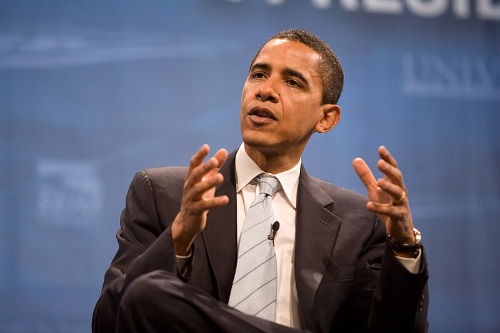
During his time in the Senate, Barack Obama once called raising the debt ceiling “a sign of leadership failure” and an irresponsible burden on future generations. But as president, he had to push for debt ceiling increases multiple times. This wasn’t unique to Obama—politicians from both parties have used the debt ceiling as a patriotic talking point, depending on who’s in power. When they’re in the opposition, they call it reckless spending; when they’re in control, they call it necessary governance.
The reality is that raising the debt ceiling doesn’t increase spending—it allows the government to pay for what it’s already committed to. But the political messaging around it often turns into a PR battle about fiscal responsibility and patriotism. Leaders use it to rally their base and paint the other side as financially reckless. In the end, it’s less about true economic policy and more about political theater wrapped in patriotic rhetoric.


